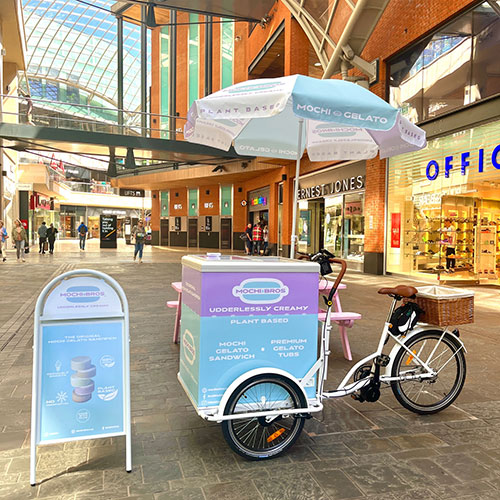Displaying Pavement Signs and Advertising Signs outside your business is an excellent method for attracting new customers, promoting exclusive deals, and showcasing new menus, products, or promotions. We are proud to offer a huge range of advertising signs, however, it does make it tricky to understand what sign will work best for your business.
- A Board Signs - A classic sandwich board design with double-sided printed posters. Hassle-free and low-maintenance signage with no assembly required.
- Forecourt Signs - A more heavy-duty pavement sign range usually offering larger poster sizes of A1 or above. Rugged designs with hard-wearing materials.
- Outdoor Chalkboards - A popular choice in the hospitality sector offering instant message changes with a classic rustic feel.
- Swing Sign - Suitable for any business and extremely hardwearing and weatherproof. Available with printed posters or printed vinyl graphics.
- Water Base Signs - Our most popular range of pavement signs. Resilient in any weather, hardwearing and heavy-duty signage with the widest range of sizes.
Before you proceed with setting up your new pavement sign, it's crucial to understand the rules and regulations governing their installation, including the potential need for planning permission for specific types of advertising signs. The regulations governing pavement signs are codified and enforced by individual UK councils. We've created a guide for the most common rules and regulations that surround the use of pavement signs for businesses. However, for precise information pertaining to your location, we recommend visiting your local council's website or contacting their planning teams.
There are exceptions to this general rule:
- If your location falls within a National Park or a comparable area, you must reach out to the relevant authority responsible for that land.
- If your location is situated in an urban development zone, you should contact the Urban Development Corporation overseeing that area.
In most cases, when planning to place your display board sign on privately owned or rented land, such as a garage forecourt, restaurant terrace, or the enclosed area in front of a shop, you typically have deemed consent, and thus, you should not require planning permission to install your sign. However, if your sign incorporates illumination, it might be subject to additional approvals, so it's advisable to confirm this with your local authority.
Should you wish to position your sign along a public highway, such as by the roadside or on a pavement, you will need to seek permission from your local authority or the governing body responsible for managing the site. To determine the appropriate entity to approach, you can use a designated tool for this purpose.
Councils will consider several factors when evaluating your pavement sign request:
- Obstruction & Distraction: Will your sign inconvenience or pose a hazard to pedestrians, especially wheelchair users or those with visual impairments? Could it distract drivers?
- Security: Is there a risk that your sign might blow into the road, potentially causing harm to pedestrians or disrupting traffic?
- Impact: Will your sign have an adverse visual impact on the area, especially if it is located in a conservation area or in front of a listed building?
- Condition: Is your sign securely and safely maintained, such as being properly chained or affixed in place?
- Content: In certain cases, local authorities may only permit informational signs, deeming promotional materials inappropriate.
For the placement of a sign on the pavement in front of your premises, here are some general guidelines:
Many councils typically allow only one sign per premises, even if two businesses share the space. Signs must not be positioned within 2 meters of another pavement sign, pillar, or tactile paving (e.g., raised or marked slabs for the visually impaired) or within 2 meters of a bus stop or pedestrian crossing. In addition:
- Signs must not obstruct access to any building exits, particularly emergency exits.
- Signs cannot be placed more than 0.8 meters from the front of your building and must leave at least 1.8 meters of space for pedestrians to pass.
- There may be limits on the display size, often not exceeding 1200mm in height and 750mm in width.
- Attaching any accessories to your signs (e.g., lighting, sanitising stations) may require additional permissions.
- Signs can only be erected during trading hours and should be stored indoors when your business is closed.
The precise specifications of these requirements can vary depending on your location and specific circumstances, so it's essential to verify them with your local authority.
Remember, even if you obtain permission to install a pavement sign, all outdoor advertisements must adhere to five standard conditions:
- Be kept clean and tidy.
- Be maintained in a safe condition.
- Have the approval of the site owner on which they are displayed (including the Highway Authority if the sign is placed on highway land).
- Not obscure or hinder the interpretation of official road, rail, waterway, or aircraft signs.
- Be removed as required by the planning authority.
Lastly, before you install your pavement sign, it's crucial to have public liability indemnity insurance in place, typically with coverage of around £5 million. This insurance is designed to protect your business in case anyone sustains an injury or accident caused by your sign or board, such as tripping over it, getting fingers trapped in it, or having it fall on them. In fact, your local council may require proof of such coverage before granting permission for sign installation.
In situations where a pedestrian is injured by a pavement sign (even if due to their own actions, such as tampering with or moving your sign), councils have a responsibility to safeguard individuals, highlighting the importance of public liability indemnity insurance to protect your business.

SCRIBBLE® Slide-In Double Sided Chalkboard Sign

BOOSTER 2 Magnetic Pavement Sign Poster A-Board